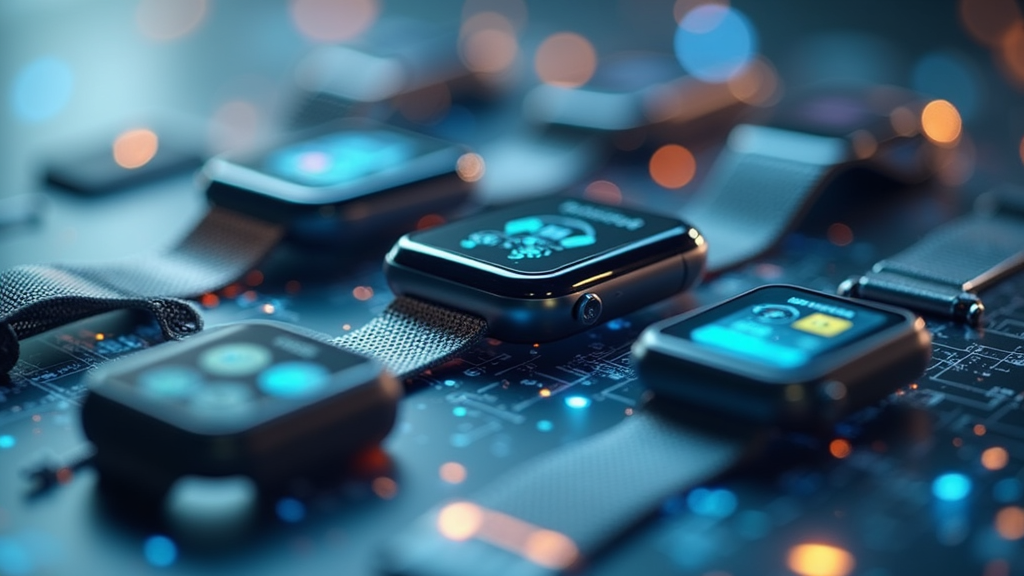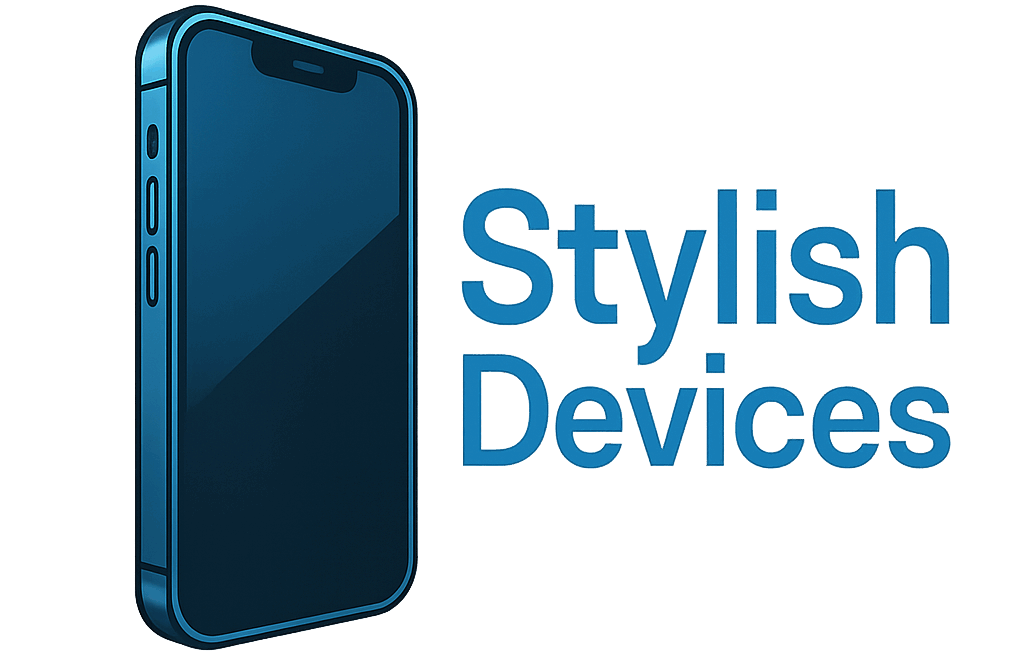AI is becoming part of everyday life, and wearable devices are one of the areas where I see this impact happening fast. Wearables like smartwatches, fitness trackers, and even smart glasses are getting smarter every year, adapting to what I need and making my daily routines smoother. The addition of AI in these devices is switching up how I track my health, interact with technology, and make choices about my lifestyle. Here, I’ll share how AI is showing up in wearables, some next-level cool features this brings, and a few things worth considering before adding a new device to your routine.

Why AI Makes Wearables Smarter
AI turns ordinary wearables into helpful, intelligent tools. Instead of just counting steps or tracking heart rate, my devices now learn from my behavior and deliver feedback that matches what I need. This means I can get health reminders, customized coaching, and even updates about my routines based on real-time analysis.
Reports show that the AI-powered wearable market is spreading like wildfire, with new gadgets adding features way beyond basic tracking. For example, AI now allows for non-stop heart rhythm monitoring, early alerts for possible health events, and smart notifications adapted to my daily schedule. For me, wearing a smartwatch or fitness band isn’t just about gathering data; it’s about tracking down the insights that help me stay healthy and in tune with my body.
From fitness checks to sleep analysis and even stress detection, AI lets wearables make sense of complex data and break it down for me. Instead of looking over spreadsheets or trying to make sense of numbers, I get actionable advice or timely alerts, turning my wearables into genuinely helpful companions.
The Basics: What AI Does in Today’s Wearable Devices
Basic wearables used to display simple stats, but with the jump to AI, things have gone up a notch. Now, smart algorithms work behind the scenes, gathering activity data, finding trends, and even taking a guess at likely outcomes.
- Activity Recognition: My device can spot whether I’m walking, running, or resting, often without any directions from me. AI uses pattern recognition to shift between modes automatically.
- Personalized Recommendations: By reviewing my habits and activity logs, the AI suggests customized exercise routines, rest periods, or even prompts me to stand up after sitting for too long.
- Health Alerts: AI keeps an eye out for heart rate variability changes, possible arrhythmias, or weird sleep patterns, and nudges me if something seems unusual.
- Smart Notifications: The device decides when to send notifications so I’m not overwhelmed, filtering only the most useful alerts.
Thanks to this AI boost, even basic fitness trackers suggest relaxing breathing exercises, resistance band workout ideas, or hydration reminders, all tailored to what the system learns about my life.
Getting Started: How AI Integration Changes Daily Use
When I first got into using an AI-packed wearable, it felt like gaining a coach and health assistant on my wrist. The device picked up on my patterns quickly, switching up step goals based on past activity, and even rethinking sleep advice based on how well I’d rested the night before.
These are some practical ways that AI pops up in everyday use:
- Goal Adjustment: Step and fitness goals switch up as my activity level goes up and down throughout the week.
- Adaptive Reminders: Instead of a set schedule, the wearable reminds me to move or hydrate only when needed, not on a fixed timer.
- Workout Tracking: Automatic recognition gets started, logging activities without extra steps, and suggesting cooled-down sessions based on my effort.
- Health Monitoring: AI watches for irregular heart patterns or changes in sleep, then shares insights with me or, if I allow, my doctor.
AI makes each device feel more like a partner and less like just another gadget. These updates usually happen without me noticing, making my daily routines more efficient and targeted.
Things to Think About Before Buying an AI-Powered Wearable
Adding a smart wearable can be exciting, but there are a few practical points I always weigh before buying. Not every device brings the same benefits, so it’s smart to pick one that matches my daily activities and priorities.
- Privacy and Data Security: The device grabs sensitive data. I check where my info is stored and how tightly it’s guarded. Companies should say it clearly in their privacy policies, letting me decide what gets shared.
- Battery Life: More AI usually means more battery needs, so I look for devices that don’t force daily charging and can cut it during busy days or road trips.
- Compatibility: I need wearables that sync easily with my phone, apps, and other devices. Compatibility problems can block me from experiencing the full AI perks.
- Price vs. Features: Some products cost extra for advanced AI, but not every upgrade is right for everyone. I go for features that really match my routines, not just the flashiest or priciest ones.
- Accuracy: Even with AI improvements, data can be off sometimes. I always check reviews for real-world accuracy before counting on health suggestions.
Privacy and Data Security
Without exception, privacy sits at the top of the list for me and for most others. AI needs access to a lot of personal stuff like daily movement and heart rhythms. Before I buy, I always check what the brand does with this info, how I can reach or erase my data, and what protection is in place. I prefer brands that are straight about data storage, sharing, and security measures since that sets the stage for long-term trust.
Battery Life: Can Your Device Keep Up?
Certain AI features, especially those that constantly check sleep or keep tabs on heart rate all day, tend to use up more juice. I aim for devices that find a balance between next-level cool features and solid battery life, so I’m not losing charge midday or missing a night’s sleep data. While brands usually lay out battery estimates, checking real user feedback helps me track down which devices actually last.
Compatibility: Fitting In With Daily Life
The top AI wearable won’t make my digital life harder. Sometimes, wearables with awesome AI-powered features really work their magic only with certain phones or in particular ecosystems. I make sure what I buy meshes well with my other devices and everyday apps, making the whole experience smoother.
Advanced Features and Smart Use Cases
AI-driven wearables keep raising the bar. Here are some next-level cool features that can give a boost to daily routines, health, and even your time at work:
Electrocardiogram (ECG) and Heart Monitoring: Many devices now record ECGs and check for odd heart rhythms, helping to catch problems early and prompting a timely doctor visit. I pay extra attention to these if heart health is high on my list.
On-Device Coaching: Custom coaching with real-time tips for running pace, better breathing, or improving posture is now part of the package. My wearable reacts on the spot, offering tips during workouts or in high-stress meetings.
Sleep Optimization: AI filters through sleep data, giving tips to help me rest better, from bedtime routines to environmental changes that make sleep deeper.
Real-world uses also push into areas like workplace safety, letting AI wearables track fatigue and sound alerts if I look exhausted. For athletes and fitness buffs, these devices break down training sessions and recovery times, giving coaches smarter info when building routines. Some students even use AI wearables to map out optimal study times based on concentration or alertness cues tracked throughout the day.
Wearables are not just for personal use either. In hospital settings, doctors test AI-enabled devices that monitor patient vitals, allowing for rapid intervention if something goes wrong. Tech companies are also working on new wearables that can detect emotional cues or stress in real time, offering tools for mental wellness or productivity streaks. The mix of features expands every year, making wearables more practical and impactful for professionals, athletes, and the average person alike.
Common Questions About AI Wearables
I often get these questions about AI and wearables:
Can AI in wearables tell if I’m getting sick?
Answer: Some gadgets look for signs like skin temperature changes, shifts in breathing, or unusual sleep, suggesting I might be under the weather. Still, I always double-check with a healthcare provider before leaning on those alerts alone.
Does wearing an AI-powered device drain my phone’s battery faster?
Answer: Wearables connect through Bluetooth or Wi-Fi, which can tug on phone batteries a little—especially if sync is nonstop. Luckily, most current devices are engineered to keep things efficient.
Is the data accurate enough to use for serious health decisions?
Answer: AI wearables can pick up on trends and offer insights, but I always talk things over with a doctor for anything major because these devices can’t take the place of professional medical checks.
Wrapping Up: The Future of AI in Wearables
AI will only become more common on my wrist, in my pocket, or even in my shoes. With technology growing, my wearable is about to become an even smarter assistant—helping me track health, find my way through everyday life, and keep productive at work. With new advances each year, being careful in choosing a device is key, especially since privacy, battery concerns, and data accuracy keep getting better. I’m excited to see how these devices get even more helpful and essential as time goes on.
